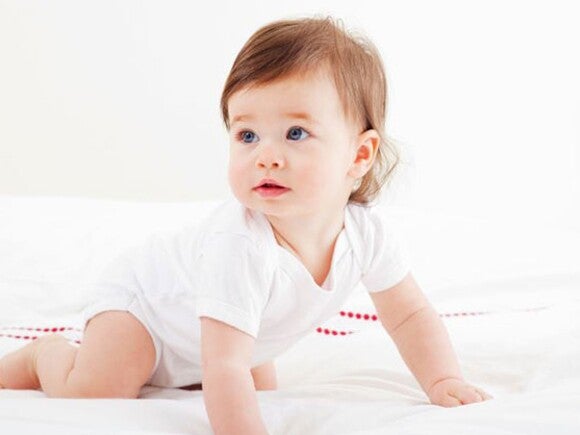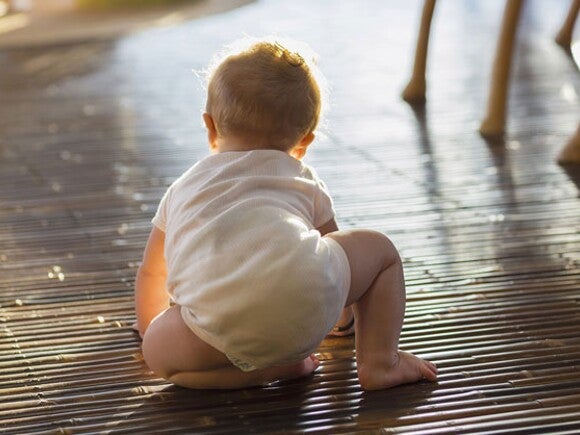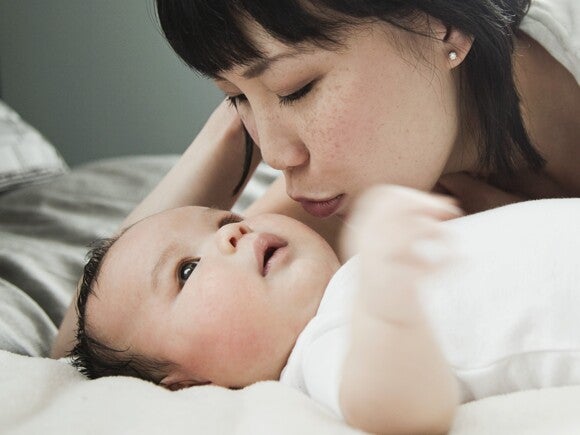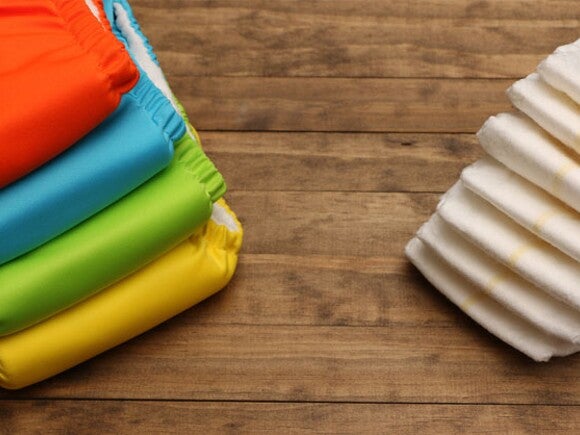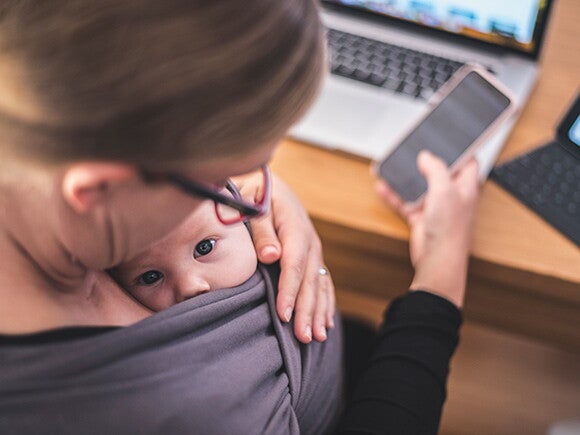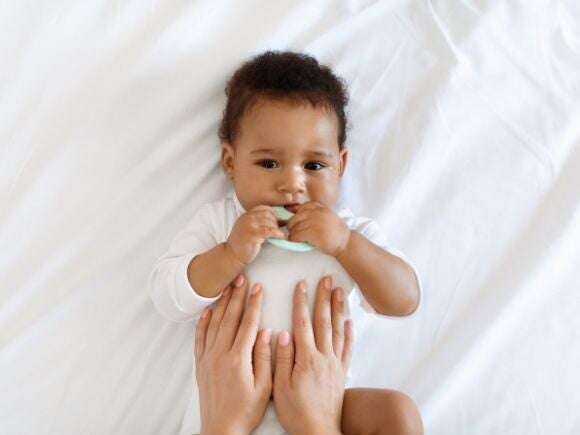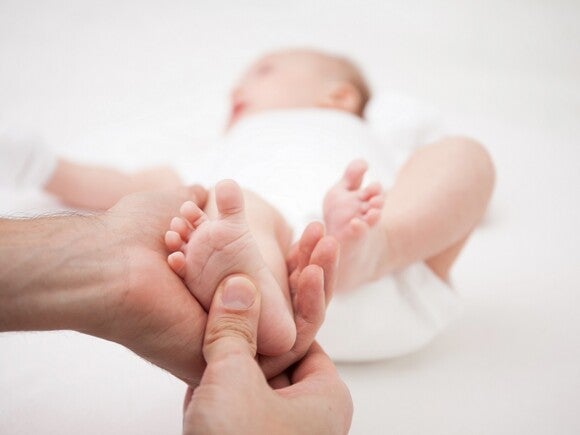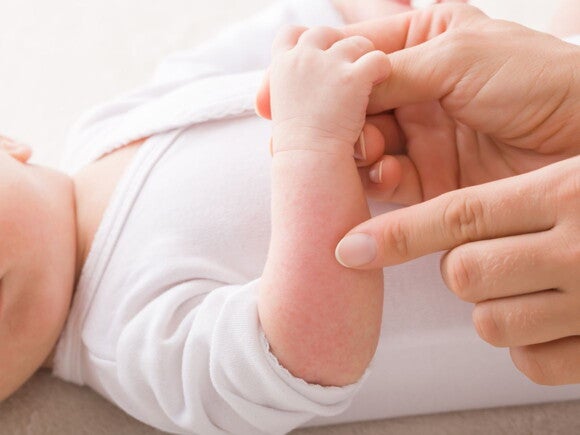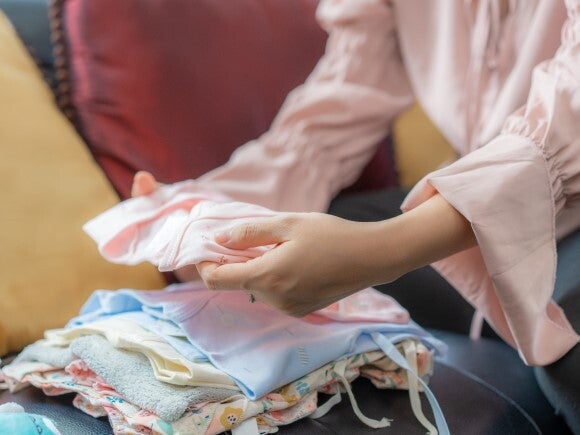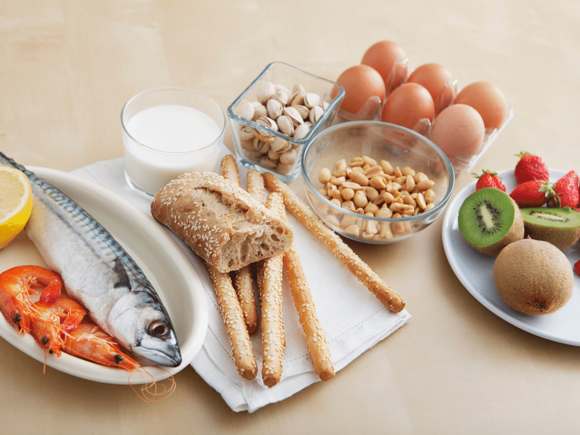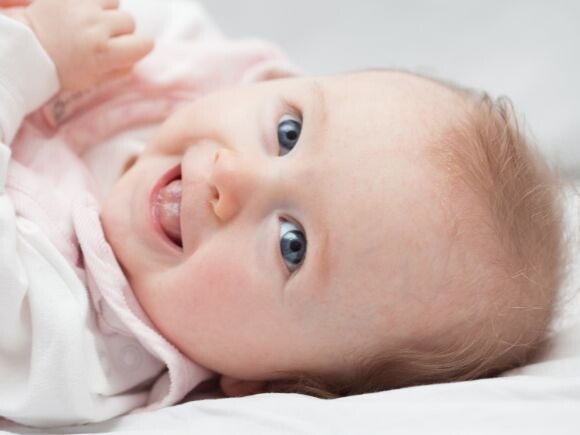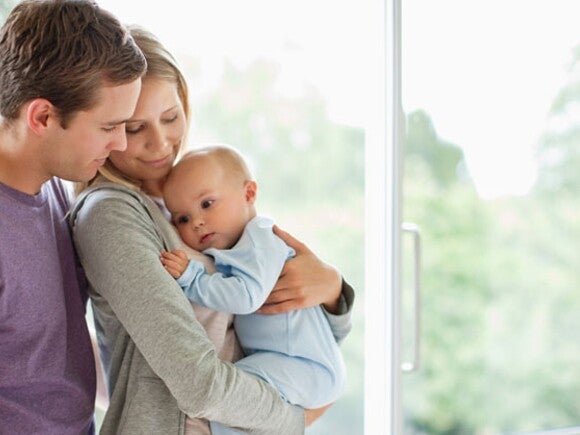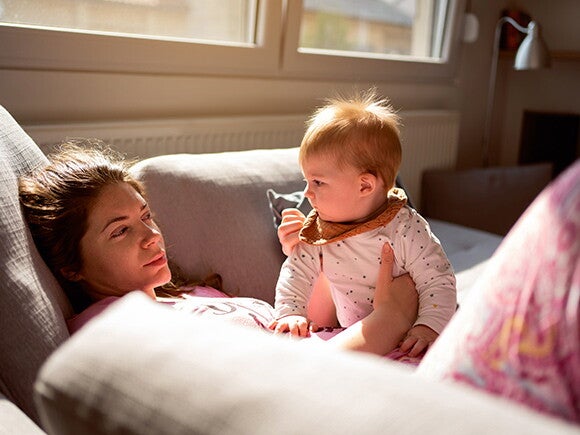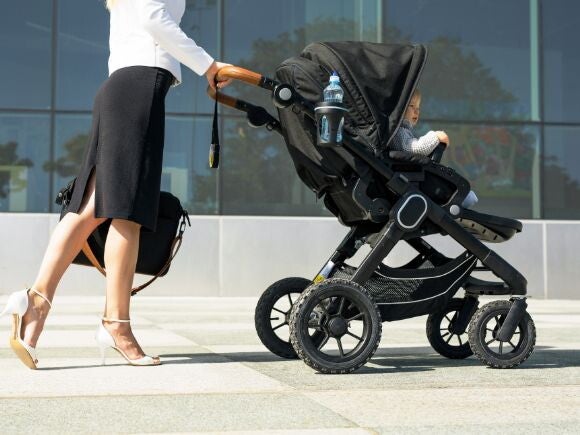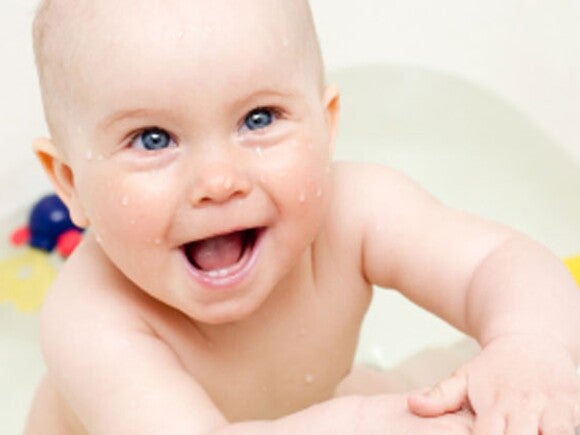Regardless of how you change a nappy, the most important thing is that your baby is:
- Having around six wet nappies;
- Having a bowel motion once a day; or every second day; and sometimes may go for several days between bowel motions.
This is quite normal and does vary among babies.
Top 10 Nappy Changing Tips
Follow these tips to make nappy changing easier:
1. Changing surface: The floor or a table or bench at elbow height is a good place – there is less bending, crouching, and kneeling. The floor is always a good option as your baby can never fall off.
2. Keep a hand on the baby: Never turn your back on your baby when on the changing table. Keep one hand touching their body at all times – it will make both of you feel more secure.
3. Be prepared: Organise your baby’s clean nappy, waste disposable bag or bucket, wipes, and creams within easy reach.
4. Adjust the nappy for newborns: Until your baby’s umbilical cord stump falls off, buy nappies with the cord area cut out or fold down the top of the nappy to leave area open to the air.
5. Consider using a washcloth: For the first few months your baby’s skin may be sensitive to the chemicals and fragrances in pre-packaged wipes. Use a warm, clean, soft washcloth with water to gently wipe your baby’s bottom and leave the pre-packed wipes for outings only.
6. Clean thoroughly: Wiping your baby’s genital area and bottom clean helps prevent nappy rash and keeps them smelling baby-fresh. When wiping, always wipe from front to back, which helps reduce the chance of bacterial contamination.
7. With boys, watch out: To avoid being splashed if your baby boy starts to wee while you’re changing his nappy, place a soft cloth over the penis until you can get the nappy positioned correctly.
8. With girls, be gentle: When changing little girls wipe down.
9. Disposable nappies: Go for a snug fit. Flatten out the elasticised sides before fastening. When fastening a disposable nappy, make sure it’s not too tight – you don’t want to constrict your baby’s tummy but left too loose, even the most elasticised disposable will leak.
10. Cloth nappies: Secure the nappy with safety pins or a plastic nappy fastener. To prevent a pin from sticking your baby, keep your fingers between the pin and your baby’s skin—better that you get stuck than your baby. Always check the pin to make sure it’s secure. Add protective plastic, nylon pants, or a nappy cover for added waterproofing.
Nappy changing is a process that every mother and father needs to learn. It is an inevitable chore in every parent’s life – enjoy the process.
Disposable Nappy or Cloth Nappy
One of the first decisions you’ll make in caring for your baby will be what kind of nappy to use. You have two choices – disposable or cloth. Both have advantages and disadvantages. Outlined below are some of the features to consider when making your choice.
1. Material Types: Disposable nappies are made of man-made materials and must be disposed of after use while cloth nappies come in woven cotton, terry cloth, or flannel and can be bought unfolded or pre-folded in different thicknesses and designs.
2. Size types: Disposable nappies come in different sizes based on your baby’s weight and age. Cloth nappies can also come in different sizes.
3. How they stay on: Disposable nappies are fastened with tape or Velcro strips attached to the back panel that fasten in the front. Traditional cloth nappies are fastened with safety pins or nappy fasteners and require plastic over pants for wetness protection. There is no need for covers or pins on many designer cloth nappies – many have Velcro or press stud fasteners with build in wetness protective outer layers.
4. Cleaning and disposal: Solid waste is disposed of in the toilet for either nappy. Wet disposable nappies are folded in on themselves and disposed of in the bin. Cloth nappies require soaking and laundering. Flushable liners are available for inserting in cloth nappies – making cleaning up a little easier.
5. Day care use: Most day care centres require disposable nappies because they are more convenient to use and easier and more hygienic to dispose of. Discuss the option of using cloth nappies at your day care centre. In-home care providers may be more agreeable than centres to using cloth.
6. Nappy rash prevention: Disposable nappies have an inner liner to keep wetness away from the skin. This keeps baby’s bottom drier and less susceptible to irritation. Many cloth nappies have stay-dry liners similar to disposables which help prevent nappy rash.
7. Travel convenience: Soiled disposable nappies can be thrown away in appropriate waste bins. Soiled cloth nappies can be placed in re-sealable plastic bags and laundered when convenient.
8. Price: Using disposable nappies is more expensive than laundering cloth nappies at home. Cloth nappies that you launder yourself are often the least expensive choice. Look around as there are many types of cloth nappies available.
9. Environmental considerations: There are environmental pros and cons on both sides of the nappy debate. Self-laundering and nappy services use water and electricity. Disposable nappies add to the long term problem of non-decomposing garbage that is deposited in our landfills.
Take your time to make the right decision for your baby both for now and in the future. And remember, you can always change your mind!
Nappy Changing – Girl
A baby girl’s vaginal area is delicate and does not need to be wiped deep into the inner vaginal folds.
Gently hold the vaginal folds apart and wipe downwards with a soft nappy liner or cotton wool ball soaked in warm water. Treated cleansing wipes are unnecessary and can often aggravate the delicate skin and mucosa.
Change nappies every three to four hours around feed time. This will avoid urine burning delicate skin from being in contact too long.
Always wipe the vaginal area in a downward direction to avoid urinary infections from faecal contamination wiped into the short urethra.
Some baby girls will have a pseudo-menstruation which is a small blood streaked mucous discharge from the vagina during the first six weeks. This is normal and needs wiping away at nappy change time.
Nappy Changing – Boy
When wiping baby boys, gently lift up the scrotum, then wipe.
Baby boys, who are not circumcised, do not need to have the foreskin at the tip of the penis pulled back to clean. A bath every few days or ‘top and tail’ wash daily will keep this area clean. Boys will start playing with themselves and pulling back the foreskin at approximately 12 months old. This is a normal part of discovering themselves.
As your baby boy gets older encourage the importance of gently pulling back the foreskin to prevent a wild spray while toileting and for general hygiene.
Change nappies every three to four hours around feed time.
Nappy Rash
Leaving a nappy on your baby for long periods of time is a common cause of nappy rash but not the only cause. Some babies get nappy rash no matter how well they are cared for, while others do not get nappy rash at all. Your baby may get nappy rash when they have a cold; when they are teething; when they are suffering from illnesses; or as a result of food intolerance. Signs of nappy rash include:
Inflamed skin: the skin around the genital area and anus looks red and moist;
- Blistering: the skin may blister and peel, leaving raw patches that can develop into ulcers;
- Spreading: the rash can spread onto the tummy and further onto the buttocks;
- Ulcers: small ulcers can sometimes form on healthy skin near the area of the rash.
A secondary bacterial or fungal infection is a complication that can occur with nappy rash that spreads or fails to heal by airing, bathing and applying barrier creams or ointments. Damaged skin is often uncomfortable, itchy or sore. When your baby has nappy rash they may have unsettled sleep due to pain and irritation.
Some causes of nappy rash include:
- Chemicals in urine become ammonia and burn the skin when in direct contact for too long;
- Thrush (Candida) – grows in a warm, moist environment. This type of nappy rash spreads in red patches and does not go away with barrier creams;
- Chemicals in nappy soaking solutions, laundry detergents, fabric softeners, cleansing wipes, scented soaps and lotions and certain brands of disposable nappies can irritate baby’s skin;
- Plastic pants keep your baby’s clothes clean and dry, but most prevent airflow. Clothes do not get wet and your baby is often left in a wet or dirty nappy for long periods. The skin remains wet and urine burns. The area becomes warm leaving it susceptible to thrush;
- Rough nappies, sand or dirt can rub and chafe baby’s sensitive skin;
- When your baby has frequent diarrhoea;
- If your baby has lots of soiled nappies;
- Other conditions such as eczema may make nappy rash worse.
